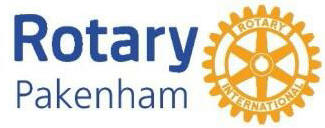SUSTAINABLE LIVING
by Peter Berg
Be a friend to the environment - it helps make the world a healthier and safer place for ourselves and future generations.
Every year thousands of tonnes of household waste is sent to landfill. This includes furniture, whitegoods, plastic, metal, glassware, toys, clothing, cans, batteries, mattresses, cleaning products, cardboard, books, paper products and importantly electronic (e-waste) items - computers, laptops, iPads, smart phones and printer ink cartridges. Many of these items contain valuable raw materials that can be preserved.
by Peter Berg
Be a friend to the environment - it helps make the world a healthier and safer place for ourselves and future generations.
Every year thousands of tonnes of household waste is sent to landfill. This includes furniture, whitegoods, plastic, metal, glassware, toys, clothing, cans, batteries, mattresses, cleaning products, cardboard, books, paper products and importantly electronic (e-waste) items - computers, laptops, iPads, smart phones and printer ink cartridges. Many of these items contain valuable raw materials that can be preserved.
Did you know?
Almost two thirds of landfill waste is biodegradable. This waste rots and decomposes polluting the local environment including water and soil as landfill produces harmful gases (CO2 and Methane) which are both greenhouse gases and contribute to global warming. Methane gas is 25% more toxic than CO2.
à Furniture, microwaves, stereos, TVs, whitegoods and mattresses that sit on the streets finish up in landfill. à Mattresses consist of steel, wood and foam which are materials which can all be recycled. à Metal from whitegoods can be recycled a number of times to make new products.
à E- waste leaks toxic lead and mercury emissions, polluting the environment and is the fasted growing waste stream in Australia, growing three times faster than other general waste.
à Across the globe 50 million tonnes of e-waste is produced annually – in Australia, it is 700,000 tonnes. The average Australian family generates 73 kilos of e-waste a year. à 95% of a mobile phone can be recycled, smart phones contain gold, copper and platinum which are valuable resources to recover and reuse; yet only ten percent of mobile phones are recycled in Australia.
à It's dangerous to put hazardous waste such as batteries, motor oil, chemicals, paints, and used lighting products containing mercury including compact fluorescent lamps in
kerb-side recycling. Call your local council and seek advice on how to dispose of such items.
à We discard lots of batteries – it is estimated over 11,000 tonnes of batteries end up in landfill every year and currently only three percent of batteries are recycled. Batteries also contain valuable material including rare earth metals that may be recovered through recycling.
Action YOU Can Take
à Recycle and reuse household waste to keep it away from landfill.
à Limit the use of single-use and disposable products and choose alternatives which can be reused.
à Where possible, opt for products with minimal packaging.
à Keep reusable bags handy and remember to take them to the shops.
à When buying fruit and vegetables, use alternative packaging rather than plastic bags.
à Use glass jars to store food or other items.
à To reduce waste, endeavour to repair household items instead of replacing.
à Separate recyclable items in your home from general waste for placement in recycling bins.
à Recycle as much as possible, contact local councils for details of any future recycling collections and the location of council operated resource recovery centres.
à Pass on household items that are no longer required such as furniture, clothing, books, disposable crockery and glassware to family and friends or donate to local charity shops.
Alternatively, try selling these items online or have a garage sale.
à Toys can be reused by passing on to friends, given to toy libraries or by creating a swap group for toys.
à A number of organisations apart from local councils will accept recycled goods such as the Metropolitan Transfer Station in the Melbourne area.
à Mobile Muster accepts old mobile phones for recycling and Soft Landing recycles unwanted used mattresses.
à Search for retail outlets that will accept old mobile phones, used batteries and printer cartridges.
Rotary Clubs play an important role in recycling equipment and goods from commercial organisations using Rotary Donations in Kind (DIK) stores.
This is a major commercial recycling activity with donations received from entities such as local hospitals, hotels, supermarkets and schools. Containers of used equipment and goods which include furniture, children's playgrounds, clothing, educational and medical supplies are shipped in containers to developing countries and lesser advantaged communities in Australia.
